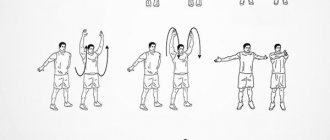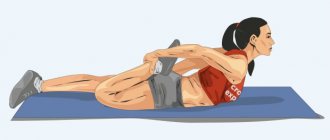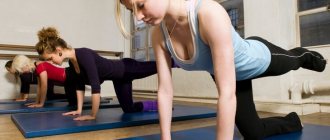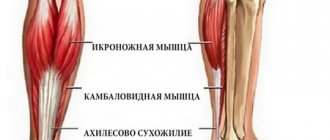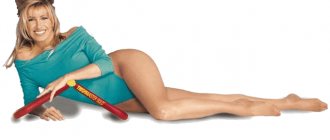Why pre-warm up your body?
Warming up before stretching helps prepare muscle fibers and ligament tissues to absorb stress. Local structures are qualitatively relaxed and become more elastic. The combination of these points reduces the risk of injury.
During pre-warming before stretching, the splits have a tonic effect on the blood vessels. Accordingly, the negative load on the heart is noticeably reduced. Tissues that are subjected to stress during exercise are better saturated with oxygen. The level of endurance increases during active training.
Warming up before stretching seems to be a good method of mental preparation. Such actions make it possible to mentally tune in to the perception of upcoming loads. As a result, there is an increased focus on maintaining the correct technique for performing stretching exercises.
First steps
When starting to warm up before stretching, first perform a set of active body movements while maintaining high intensity. We are talking about running in place, rotating the lower limbs over a wide amplitude, raising the knees to chest level. It is also useful to jump rope for a few minutes. Finish with a series of deep squats. The main task here is to create a feeling of slight heat in the extremities. The presence of an effect indicates a good warming up of the muscles, which allows you to move on to more complex exercises.
Difference between stretching, warming up and cooling down
The difference between stretching and warming up before a workout is their purpose. The purpose of stretching is to increase flexibility and range of joints . However, when warming up, it is important to increase body temperature and blood flow to the muscles. Both of these techniques are usually performed before a workout , but you can do post-workout stretches along with a cool-down. However, all three forms of exercise are part of one complex - warm-up. [1] [2] [3] [4]
Warming up
Warming up before training is important in preventing injuries . Proper warming up revitalizes the cardiovascular system by increasing body temperature and blood flow to the muscles. [2] Warming up also prepares your muscles for the overload of exercise . Keeping your muscles sufficiently warm during the warm-up will increase your range of motion and reduce the risk of injury during exercise . Examples of a good warm-up are aerobic exercise , such as cycling, walking or jogging, which you should do for at least 5-10 minutes.
Cooling
After training, your heart rate increases and your muscles tighten . Therefore, the purpose of cooling is to return the heart rate to normal and prevent the formation of sore throat . An example of cooling down after exercise is, for example, walking quickly and gradually slowing down. Cooling is very important for endurance athletes such as marathon runners because it helps them regulate blood flow in the body after a long period of physical activity.
Stretching
Stretching, stretching the muscles can be done before or after training . Its main pre-workout goal is to improve joint range and reduce the risk of injury during exercise. You can try stretching your entire body or just focus on a specific muscle group that you plan to train later. However, post-workout stretching serves a completely different function, and its purpose is to prevent soreness . Stretching can also be very relaxing, both physically and mentally.
Exercise "Butterfly"
After completing the above set of actions, proceed to the next exercise. Take a sitting position on a gymnastics mat. Bend your legs in front of you, placing your feet together and your knees in opposite directions. Your shins should lightly touch the floor surface. Try to keep your back straight. Begin to gently swing your lower limbs up and down, like the flapping of a butterfly's wings. Move your knees up and down for several minutes.
Warming up before stretching according to the marked scheme makes it possible to thoroughly relax the muscles and ligaments in the groin area. It is this area that is most often subject to injury if an athlete neglects to prepare the muscles to accept loads before performing the splits.
Lunges forward
How to warm up your muscles before stretching? Achieving the desired result will allow you to move into a runner's position at the start. Take a vertical body position. Smoothly take a wide step with your right foot in the frontal direction, placing your foot firmly on the floor. Move your left limb to your toes. Place your palms in front of you at the level of your feet extended forward. The thigh of the right leg should be parallel to the floor. Keeping your back straight, slowly pull the toe of your left foot back. Feel the stretch in the back of your thigh. Then stand up and lunge forward again, alternating your lower limbs.
Types of stretching
Just as there are different types of workouts , there are several forms of stretching . During your warm-up, you can focus on static, dynamic, and ballistic stretching . Let's see what the difference is between them. [8] [9]
Static stretching
This is the most common type of stretching . His technique is to stretch a muscle or group of muscles to its farthest point and then maintain that position. This type of stretching is considered the safest way to stretch your muscles. This gives the muscles and connective tissues enough time to relax.
Static stretching is usually performed before strength training , stretching the muscles you intend to train. However, many experts consider this type of stretching to be much less effective than dynamic stretching , since the dynamic warm-up significantly increases the range of motion.
Dynamic stretching
Unlike static stretching, dynamic stretching is a popular way to warm up muscles before aerobic exercise. Dynamic warm-up consists of maximally warming up the muscles by repeating the movement several times in a row . Thus, the purpose of dynamic stretching is to improve flexibility before performing any sport, running, cycling or other aerobic activity. An example of dynamic stretching is, for example, a sprinter who takes extra-long steps before running in order to establish a maximum range of motion for the upcoming power.
Ballistic stretch
Many athletes confuse this type of stretching with dynamic stretching. a significant difference between them . A dynamic warm-up is based on regular, repetitive and intentionally coordinated movements . However, ballistic stretching uses irregular , abrupt, primarily aerobic movements such as intense jumping or sprinting. At the same time, with ballistic stretching, the maximum range of motion limit must be exceeded. However, it is important to note that this type of stretching is more prone to injury and should only be performed by experienced athletes.
Passive stretching
Depending on the type of force applied, stretching can be divided into passive and active. Passive stretching occurs when an external force helps to reach the maximum point of the range. This may occur under the influence of gravity, another person, or a tensioning device such as expanders or suspended reinforcement systems. The point is that the muscle you want to stretch is not subject to primary stress , so you can relax while stretching. Passive stretching is extremely effective for relieving muscle spasms that treat injuries.
Body tilts in a sitting position
Sit comfortably on the gymnastics mat. Keep your back straight. Bring your lower limbs together and extend them in front of you. Avoid bending your legs at the knees. From this position, gently tilt your body forward. Perform a high-quality deflection in the lumbar region. Stretch your head in the direction of your feet. Straighten your arms and extend them in the frontal direction, parallel to the floor. Perform the exercise every time you plan to stretch your body. The ultimate goal of the training is to assume a position where the stomach and head lie freely on straight legs.
How to do the cross splits
Before you try to do the cross splits, you need to carefully prepare.
First you need:
- take a hot bath, so the muscles will warm up and be completely ready for stretching;
- then you need to warm up well, 10 - 15 minutes of cardio training (running, jumping rope, jumping) will do;
- another 5 - 10 minutes of strength training to warm up;
- After warming up, you need to stretch all muscle groups by performing stretching exercises.
Only after preparation can you try to do the splits.
To do this you need:
- sit on the floor;
- rest your hands on the floor;
- raise your pelvis and slowly do the splits;
Don't forget about proper, deep breathing. If the split works, then you need to stay in the split for 20 - 30 seconds, then rest and repeat if desired.
Useful tips
To achieve a good warm-up of the muscles before stretching, use the following tips:
- Try to study in the evening. After moderate physical activity throughout the day, the muscles respond to exercise much better. Accordingly, the training is more effective.
- Warm up your muscles in comfortable clothing that provides increased comfort and does not restrict movement. Shoes are optional. It is better to train barefoot, placing a gymnastic mat on the floor.
- A good alternative to performing a set of exercises to warm up the muscles is taking a bath. Sit in warm water before your planned stretch for 15-20 minutes. Then dry your body thoroughly with a towel, put on sportswear and proceed directly to training.
How to pump up your abs - recommendations:
1) Before any exercise, you need to warm up well to avoid various injuries. I will do the exercises after the main workout, so I won't have any problems warming up. If you also start pumping your abdominal muscles after the main workout, then good, but if not, then I recommend jogging for 20-30 minutes or warming up in any other way.
2) We will perform nine exercises for the abdominal muscles and one for the lower back muscles.
3) In addition to exercise, it will be necessary to additionally monitor the consumption of a sufficient amount of protein - this will ensure the formation of muscle mass.
4) Carefully study the exercises and their nuances. Correct technique is the key to success!
5) Perform exercises 4 times a week. My schedule will be as follows: Monday, Tuesday - I do; Wednesday – day off (I don’t work out my abs); Thursday, Friday - I do; Well, Saturday and Sunday are days off. Why is this necessary?
And this is necessary so that the muscles have time to recover and form new muscle mass. You can create an individual lesson schedule and schedule it for yourself. But don’t forget that we do the exercises 4 times a week!
6) We perform each exercise in just one approach. Don’t worry - this is not enough, we have nine of them.
7) We will start with 12 repetitions of each exercise. That is, they started the first exercise (in our case, this is an exercise called “birch tree”) and repeated it 12 times (raised their legs up and turned their pelvis to the right, lowered them and turned their pelvis to the left and lowered them - this is one repetition).
In the second week, when your abdominal muscles are a little stronger, do 14 repetitions of each exercise, in the third 16 and add two repetitions every week, in the last week you should get 22 repetitions.
If you find the exercises too difficult and you cannot perform this number of times, you can include an additional week in your training. There is nothing wrong with this, especially if you have not previously dealt with physical activity on this part of the muscles.
9) Rest between exercises is 5-30 seconds.
10) Do not train with a full stomach; it is also not recommended to train on an empty stomach, because... the body will draw energy from available proteins.
The best option is to have a light snack an hour before the start of your workout, and after a heavy snack, about two hours should pass.
What will we get after this set of exercises?
The strength and endurance of the abdominals will increase, and their size will also increase, they will become expressive. Basically what we need! And here are the exercises themselves. I repeat once again, first familiarize yourself with the technique, and only then start performing it.
